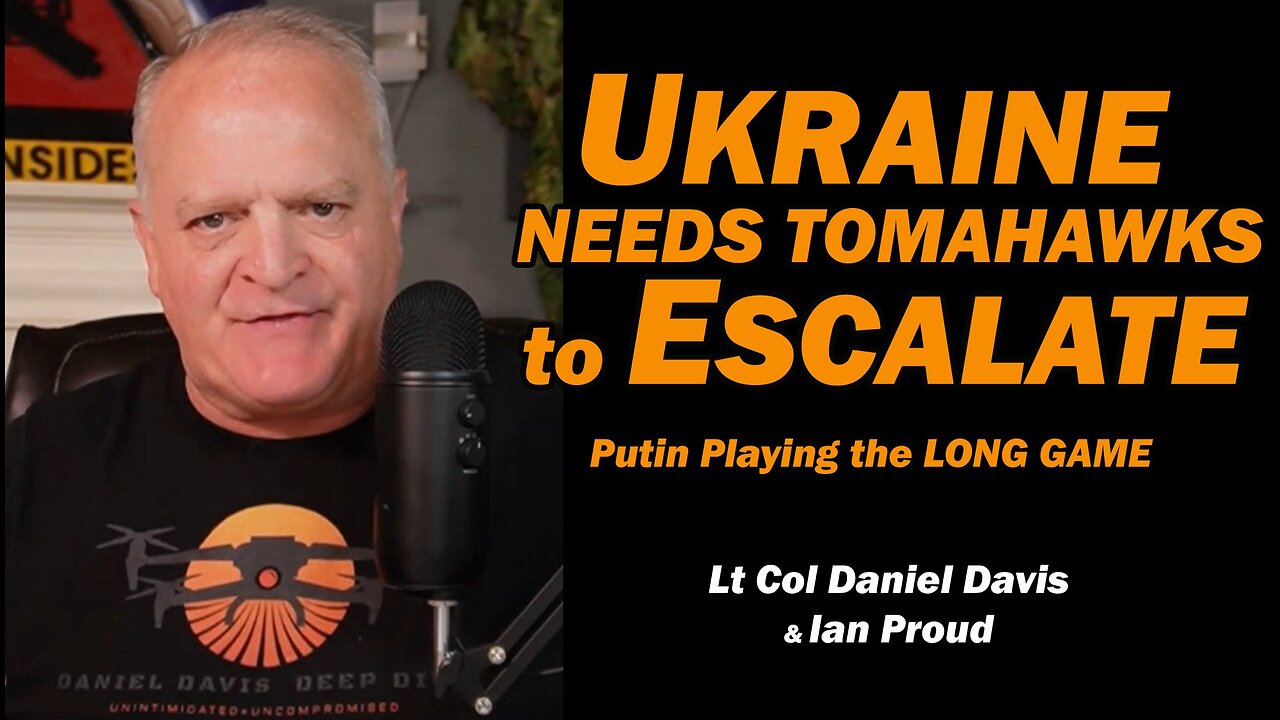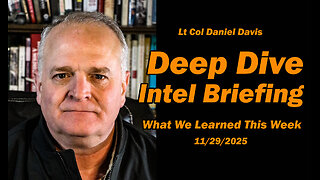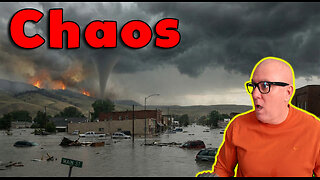Premium Only Content

ESCALATE & PROVOKE: Ukraine's Plan / Lt Col Daniel Davis & Ian Proud
Ukraine’s progress has stopped.
No meaningful advances have occurred since the summer incursion into Russia’s Kursk region, which has now been reversed.
Russia’s slow advance:
Moscow is making very gradual territorial gains, deliberately minimizing its own casualties while inflicting high Ukrainian losses.
Tactical adjustments:
Russia is using small units (sometimes just a few vehicles or motorbikes) and heavy reliance on artillery, glide bombs, and drones to attrit Ukrainian forces.
Ukraine’s constraints:
Lacking manpower and heavy weapons, Ukraine cannot launch any large offensives; massing troops would invite devastating Russian strikes.
2. Zelensky’s Strategy and the Tomahawk Debate
Zelensky is portrayed as seeking U.S. Tomahawk missiles to escalate the conflict, hoping to provoke a severe Russian response that could draw NATO closer to direct involvement—something described as “a doomsday scenario.”
From his perspective, escalation might appear to offer a path to renewed attention and support; from the critics’ view, it risks catastrophic consequences.
Russia, by contrast, is described as “fighting for time, not land,” seeking to wear down European financial and political will to keep funding Ukraine.
3. Europe’s Role and Risks
European NATO countries are seen as reluctant to intervene militarily, despite occasional airspace incursions and rising rhetoric from Poland and other states.
The speaker claims Russia is content with a “slow, grinding war” that drains Europe’s finances and morale.
This approach allegedly aligns with Putin’s long game: letting Europe “implode upon itself” as economic and political fatigue set in.
4. Zelensky’s Public Messaging
Zelensky’s recent remarks before meeting President Trump emphasize:
A “prepared agenda” combining military and economic measures.
Sanctions coordination with Britain and other allies.
The claim that stronger sanctions and Western arms like Patriots and Tomahawks can “lay a long-term foundation for peace.”
The commentators reject this entirely, saying such actions would not bring peace—only provoke Russia to escalate further with superior weapons.
5. Critique of Western and European Leadership
Zelensky is accused of spreading “propaganda” and being motivated by self-preservation (“when the war’s over, he’s out of a job”).
European leaders—Scholz, Macron, Sunak, von der Leyen, Rutte—are described as politically trapped:
They invested too much political capital in Zelensky’s success.
Admitting defeat would be politically disastrous, so they continue the rhetoric that Ukraine can win, despite clear evidence to the contrary.
Their continued public optimism is viewed as a stalling tactic, “kicking the can down the road” until after future elections.
This, the speakers say, reflects herd mentality and fear of political fallout, not strategic logic.
6. Predicted Outcomes
The analysts foresee the war lasting into 2026, since neither side (especially Europe) is ready to face reality.
As financial and military strain grows, nationalist parties across Europe—such as France’s National Rally or the UK’s Reform Party—could gain power.
If nationalist governments rise and reject the current EU line, the European Union itself could fracture, especially if France were to leave.
The end result, they warn, could be a European “death spiral”—economic, political, and institutional decay driven by denial of military realities.
-
 53:02
53:02
Daniel Davis Deep Dive
4 days agoDeep Dive Intel Breifing What We Learned This Week /Lt Col Daniel Davis
9893 -
 LIVE
LIVE
Chad Prather
18 hours agoThe Power You Cannot Buy: Motives, Power, and the Making of a True Disciple
4,176 watching -
 LIVE
LIVE
The Chris Salcedo Show
11 hours agoDispelling Narrative Over Facts On Racism
647 watching -
 16:09
16:09
T-SPLY
16 hours agoFederal Agents Arrest Non Citizen Police Officer — Department Hires Him BACK!
31.7K27 -
 12:55
12:55
World2Briggs
18 hours ago $1.14 earnedTop 10 States With The Worst Weather | Natural Disasters
12.5K -
 21:52
21:52
The King of Camo
20 hours agoGOALS 2026 Range Day
4.97K2 -
 48:22
48:22
A Cigar Hustlers Podcast Every Day
1 day agoEpisode 421 Cigar Hustlers Podcast Every Week Day Rage Bait
3.29K2 -
 LIVE
LIVE
BEK TV
23 hours agoTrent Loos in the Morning - 12/04/2025
228 watching -
 2:55
2:55
Canadian Crooner
2 years agoPat Coolen | Christmas Blues
29.5K1 -
 LIVE
LIVE
The Bubba Army
22 hours agoPHOTOS REVEALED FROM EPSTEIN ISLAND! - Bubba the Love Sponge® Show | 12/04/25
1,449 watching